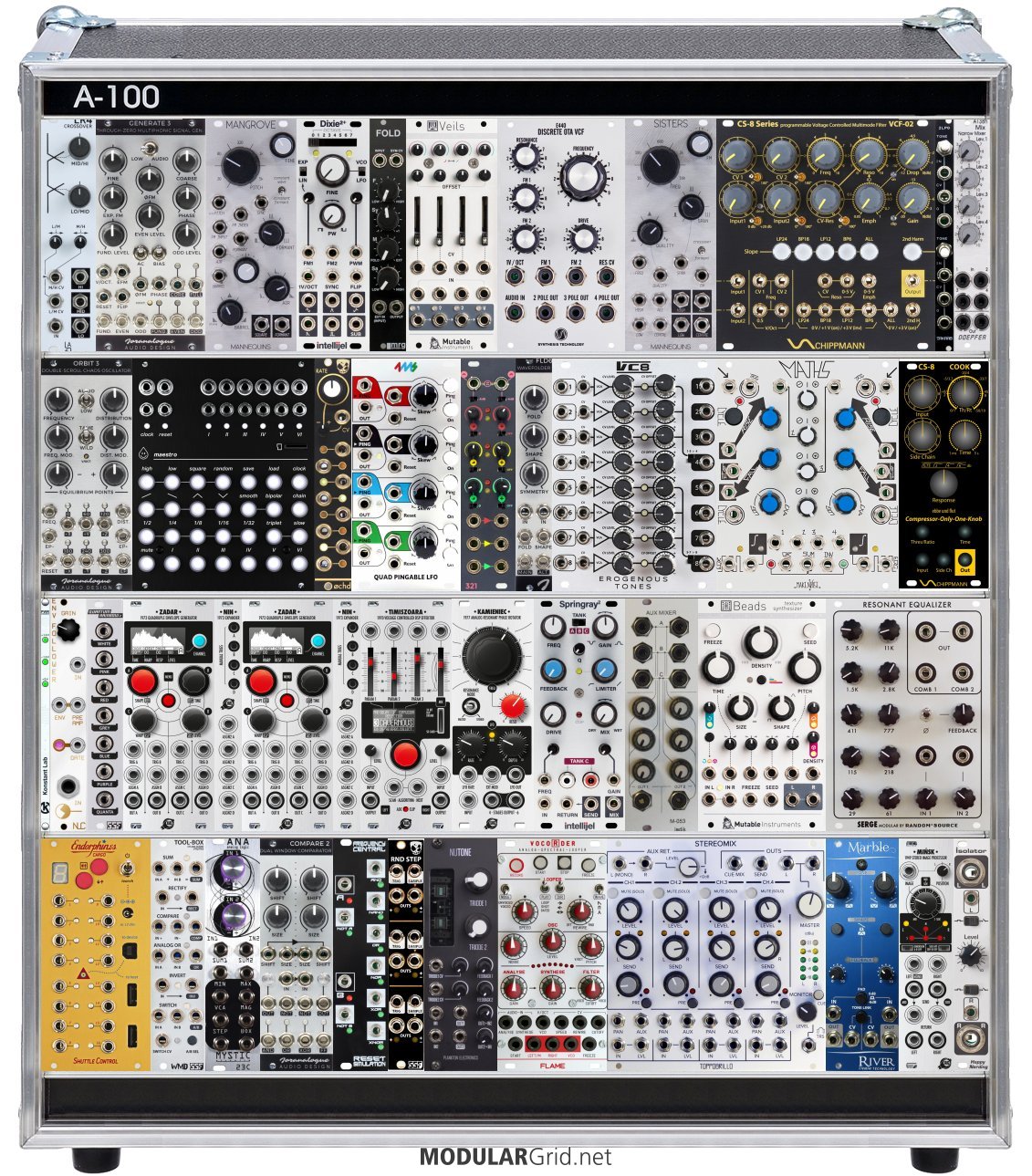Wailed on this...there was a lot there that was sort of superfluous once the organization process got going. This should make more overall sense, though:

OK...the top row is your oscillators and filters, plus a Veils after the oscillators for level control of those. Also, the crossover is up there at the upper left, as it makes more sense to use it to slice up the frequency domain of an external signal.
Second row: modulation, save for the Schippmann Compressor at the end. Notice that the waveshaper from the top row is now down here (for tampering with modulation waveforms) and I replaced the top row one with a design based on the Buchla 259's wavefolder.
Third row: This starts with a Konstant Labs PWRchekr, which I often put into builds where you have no DC rail indicators so that you can keep an eye on those. Then the entire external thing was swapped out for a Nonlinear Envelope Follower...this has a mono audio preamp, but it also extracts the incoming envelope for modulation use as well as sends a gate when the input level is high enough, and does all of this in 4 hp. Then the noise...but since the envelope generation situation here was so insufficient that I yanked all of the previous ones and put in a pair of Zadars with Nin expanders, which now brings your envelope total to eight. After those are all of your main effects; I took that down to a Timizoara multiprocessor, Kaminiec delay, and Springray reverb head, then put in a Ladik AUX mixer so that you can sum down the effects to a single stereo AUX return but still have control over the incoming levels. After this, I added a Beads for all sorts of granular mayhem, then the Resonant EQ is down at the end.
Fourth row: Starts with the MIDI interface, then a WMD Tool Box gives you a number of useful utilities in just 6 hp. ANA is next, then since we're screwing around with CV values, I put in a Joranalogue dual window comparator to pick off gate signals from all sorts of incoming signals. After that, I put in a Frequency Central logic module, which together with the previous couple of modules now gives you more potential gate complexity for firing off the triple S&H after it. Then there's your Nutone distorter and Vocoder in the pre-mixer slots. For the main mixer, I dropped in a Toppobrillo Stereomix2 which gives you VCA control over levels, panning, AUX send levels, mutes on all inputs, a CUE send function which can be very useful for checking things on the fly, such as tuning, and a full AUX loop with a mono out and stereo return. The mixer's outs go before the last two modules...I used the River tilting Baxandall EQ as a post-mixer "tone" control and the stereo field adjustment is right after that and before your main outs.
Now THIS seems to be a lot more balanced. The layout is certainly easier to navigate with your primary synth functions all grouped together, as well. My impression is that it's still a little thin on sources, but the rest of the system is now up to snuff, I think, and you've got plenty of possibilities for faking things so that the build can SEEM to have more sources than it actually does.




